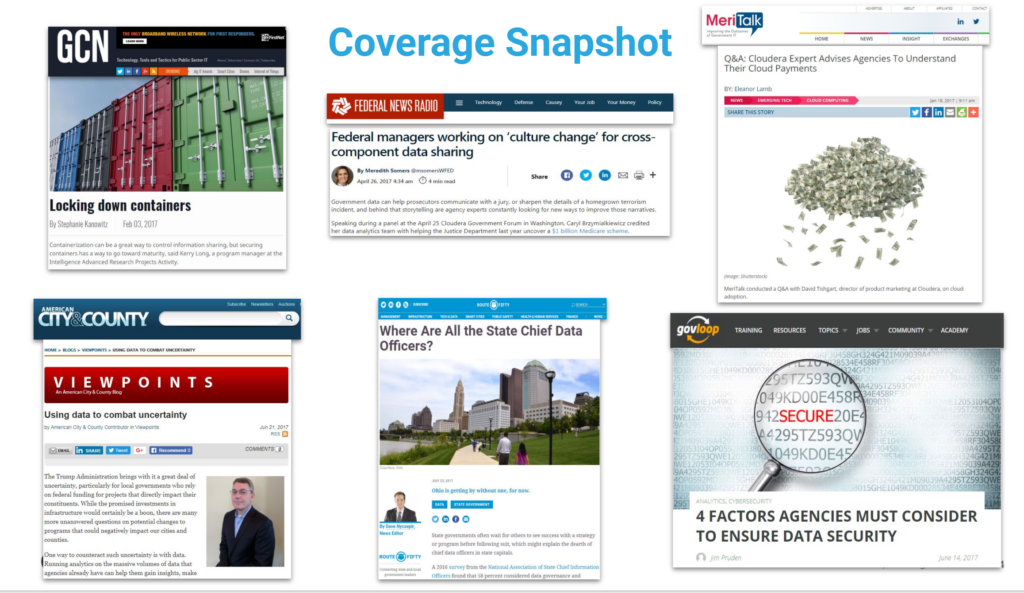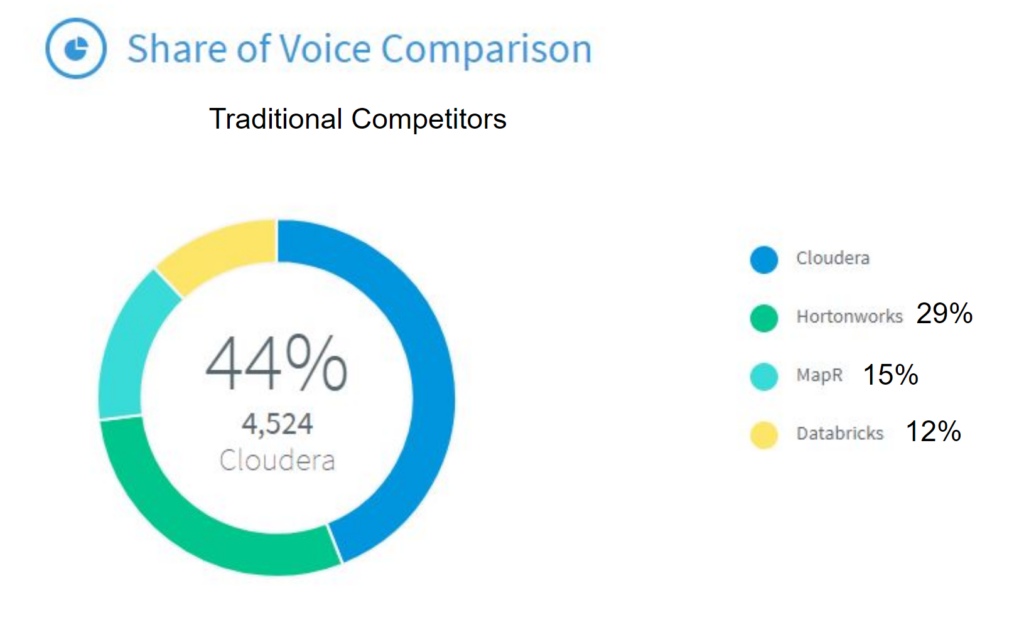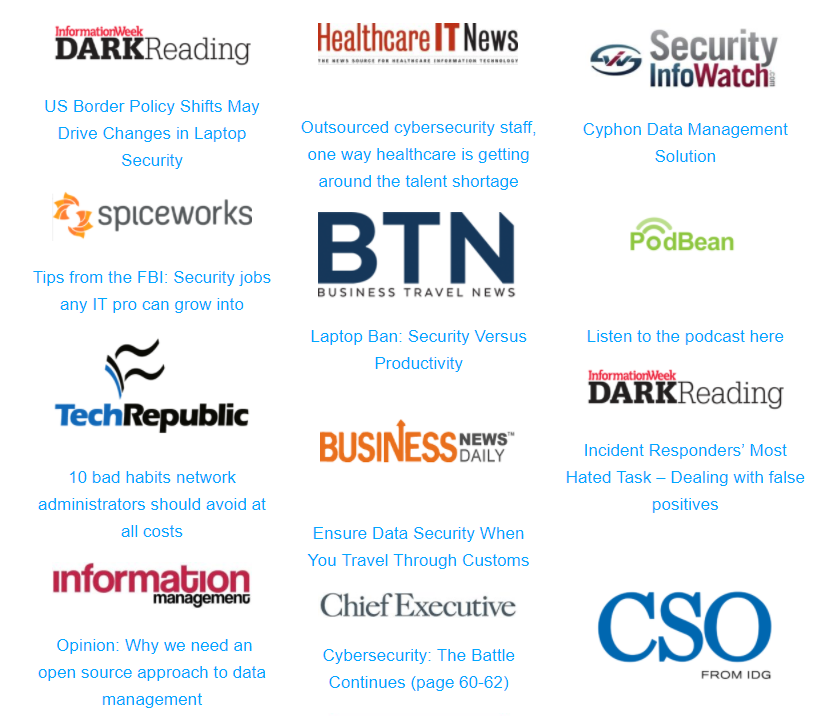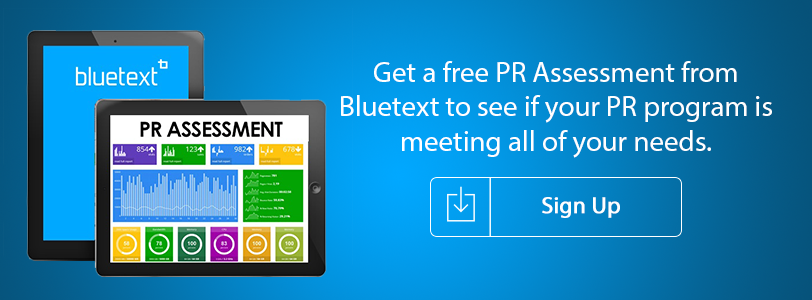Have you ever pitched a reporter with a story or announcement you thought would definitely catch their attention only to be ghosted? It’s happened to all of us at some point in our careers, in no small part because, frankly, journalists are drowning in pitches.
In Cision’s 2022 survey, more than half of the 3800 journalists responded that they received over 50 pitches a week through email, phone or social media, and about 24% of them received up to 100 per week.
As PR professionals, we are responsible for building brand reputation and promoting businesses in a positive light. To do so, we need to be armed with data and facts to create campaigns that will evoke the right response and reach the intended audience in an authentic way.
So, how can PR pros break through the noise? How do we grab the attention of reporters and other audiences? The key is infusing company stories and narratives with data.
Why use data-driven storytelling?
Data-driven storytelling helps construct and communicate a compelling story that drives action and can be the difference between a successful campaign and one that gets lost in the busy news cycle.
By accurately presenting data associated with clients, you can improve narrative-building and storytelling capabilities, connecting clients to the public in a meaningful way.
For example, personal finance, business and local consumer interest reporters are annually inundated with tax-related pitches leading up to April’s big filing day. To catch their attention, data is critical. We worked with one of our clients to build a campaign anchored by data that showed tax scam robocalls increased in volume ahead of Tax Filing Day, while also uncovering localized data narratives specific to scams circulating in different markets.
Having this reliable data to back up the story around consumer scams and awareness for Tax Day helped drive media opportunities for the client, which can help increase engagement with the public, generate interest and spark further conversation.
How to use data to tell your clients’ stories
While creativity and relationships are key components of a great public relations strategy, facts are what seal the deal. Here are four ways you can use data and spread a narrative.
- Use newsworthy statistics. When pitching a story, data drives the narrative forward. Incorporating attention-grabbing statistics helps give your narrative a solid foundation of evidence while making the content more persuasive and impactful. With newsworthy statistics, you can hope to get your client’s story more attention and media coverage.
- Frame data in the right context. Data is important, but what matters more is how you frame that data. Before sharing any statistics, make sure that you’re choosing the right facts and figures and putting them in a context that is relevant to your client’s story so that readers can instantly understand the implications of the facts you’re presenting. It’s also imperative that your spokespeople are well-equipped with the necessary data and have the right talking points to frame the story correctly.
- Follow up with visualizations. To bring your story to life and make it stand out, it’s a good idea to back up your data with visualizations such as graphs and charts. Doing this can help paint a vivid picture that reinforces the narrative you’re trying to pitch while making the story more engaging and easier to digest.
- Understand data trends. Data also provides powerful insights into the conversations happening around a brand or company, allowing you to see what phrases or keywords people are using to talk about it, how often to post about it, and which channels are being used for engagement. With this data, you can see what topics or trends are resonating with target audiences and adjust the strategy accordingly.
Data can be a PR pro’s best friend when used effectively. By framing data in the right context and following up with visualizations, reporters are likely to be engaged by your clients’ stories and more likely to cover that story.
A single well-crafted story backed with facts, statistics and data can go a long way in making your stories powerful, authoritative, and attractive to both reporters and the public.
Learn more about Bluetext’s data-centric PR approach, or contact us to hear about our full life-cycle marketing services.
Metrics-driven PR is an essential strategy in today’s competitive media landscape, helping to set the direction for public relations as well as validating its success. Traditional public relations and media outreach that seeks placements and coverage in print and online publications remains one of the most valuable assets in a marketers mix of activities. But how do you know if your PR program is achieving the right objectives? How do you know if you’re getting the value from your PR expenditure, or if the needle is stuck in the same position?
Top executives who are managing budget, as well as sales and marketing teams who have specific sales numbers to hit, continue to ask difficult questions to justify the cost of a successful public relations program because it is so difficult to assign revenues and leads directly to public relations efforts. This is not a new issue, but with so many other options that can be tied directly to lead generation, top public relations agencies know they need to have strong metrics to validate the effectiveness of their programs.
At Bluetext, we have been practicing metrics-driven PR since we launched our agency more than seven years ago. The reason is not that it’s a way to justify the expense of using a top PR firm, but more importantly, because it gives us a real-time ability to manage every PR campaign we launch for our clients, and to make quick adjustments to improve results. The alternative is to launch and execute a program without any idea of the impact on what matters most to clients: increased leads and higher revenues. The challenge, of course, is what to measure that will provide real insight into the results that matter.
That’s why we’ve published our eBook on Metrics-driven PR as a comprehensive primer on what you need to know – whether it’s for the commercial markets, for the public sector, focused on cybersecurity, or with an acquisition in mind, we share case studies and top tips for a program that measures results and achieve your strategic and revenue goals.
If any industry vertical is a prime opportunity for metrics-driven PR, it’s the public sector. Government agencies are a massive opportunity for technology and other companies that can help supply the products, services, and solutions that agencies need on a daily basis. Yet, many brands struggle with how to market to the public sector, especially at the Federal level. How purchasing decisions are made, the way agencies issue contracts and the buying cycles they follow are much different than the commercial sector.
More importantly, the messages that resonate with Federal executives are different. Return on investment, a key marker in the commercial world, isn’t as much of a factor in the public sector. Agencies have fixed budgets; and while they have downward budget pressures, they don’t have to answer to investors or the stock market. Instead, they focus on mission requirements, staying within budget parameters, and meeting legislative and policy mandates. They are risk-averse and look for solutions that will enable them to accomplish their goals without jeopardizing their own careers.
For these reasons, it takes a different approach to public relations to execute an effective campaign that will reach, educate, and motivate government buyers. There are fewer media outlets that cover the vertical, and fewer reporters available as the size of the publications have shrunk. Because of this demanding market, metrics-driven pr in the public sector is essential for implementing a successful media relations program.
One of our clients that has the public sector as one of its key target markets is Cloudera, an industry leader in open-source Hadoop big data solutions for enterprise organizations to leverage the intelligence in their systems. When Cloudera wanted to expand its presence in the Federal market, it turned to Bluetext to design and execute an effective metrics-driven public relations program.
Some of the key elements of the program, in addition to plain old-fashioned nuts and bolts media relations, was to “Federalize” Cloudera’s messages and news. This included:
- Identifying customer advocates early in their relationship to secure customers that would share their results with Cloudera for media relations purpose;
- Identifying Cloudera-specific messages and differentiated angles on news topics;
- Streamlining the pitch review cycle, especially for rapid response; and
- Enlarging the spokesperson bench to establish early on the topics and areas of expertise that each expert could talk to.The results of this program have proven the point that when a sophisticated program is linked to metrics, it has the best chance of achieving the program goals.
Here are some of the results of the program over the previous 12 months:
- 39 stories, surpassing the target goal
- 18 target publications hit, including American City & County, FCW, MeriTalk, The Hill, Federal News Radio, and NextGov
- 7 bylines placed in NASCIO, FCW, GovLoop, American City & County, SIGNAL, Fifth Domain

More importantly, we were able to garner a more than 44 percent Share of Voice in the market against Cloudera’s main competitors.

Need help implementing a metrics-driven PR program in the public sector? See how Bluetext can help.
We’ve been writing a lot recently about metrics-driven PR. One metric that is often key to certain clients is being acquired. Of course, when Bluetext first engages with a client for public relations (or any service for that matter), the client rarely opens the conversation by stating their goal is to get acquired. That may, in fact, be one of several desired outcomes, which could include raising venture capital, making acquisitions themselves, penetrating new markets, accelerating growth, or all of the above.
At the end of the day, a public relations program that raises the enterprise value of the firm can greatly assist companies in achieving any of the aforementioned objectives, which in part may be why numerous Bluetext clients over the years have seen successful acquisition exits.

The most recent example: BroadSoft, which was recently acquired by tech giant Cisco for nearly $2 billion. For 7-1/2 years leading nearly right up to its acquisition by Cisco, Bluetext served as the North America public relations and industry analyst relations agency of record for BroadSoft, a global unified communications software provider whose customer base is 600+ carriers and telecommunications service providers (including 20 of the top 25 by revenue) across 80+ countries.
When we think about public relations that raises the enterprise value of a client, what we mean is that press coverage and brand building for their own sakes do not lead to desired outcomes. That’s precisely what our goal was for Broadsoft. PR that enhances enterprise value has several components to it, including:
- Drawing attention to all key parts of the business – Technology firms may have products, services, capabilities and customer stories that are most conducive to press. For that reason, it is easy for agencies to milk them until the opportunities are bone dry, and over-rotate at the expense of other parts of the business. Yes, locking in on PR sizzle is a good strategy, but enterprise value is strengthened when a complete business capability story is told.
- Determine high-value assets – Maybe the client has assembled the best application development team in the industry, something that potential acquirers or VC investors would find as valuable as the product itself. Maybe it’s a unique set of patents, or market penetration in a growing vertical, whatever it is, public relations should lock in on those assets and build campaigns to highlight them.
- Create a vision for the future – Past results matter, but…demonstrating a client is uniquely positioned to capitalize on future market opportunities and growth shows the potential going forward is even greater than what has already been achieved. Articulating a vision and communicating why the client is leading the market towards that vision demonstrates rising future enterprise value.
For the early part of this engagement, BroadSoft considered itself an “ingredient brand” – much like Intel Inside – for telecommunications providers. The providers would white label BroadSoft’s unified communications services and sell them to enterprise and residential customers. The downside of that positioning was that the market began to consider BroadSoft a legacy voice telecommunications provider – a growing brand challenge as upstarts such as Skype, Slack positioned themselves as innovators and disruptors.
To address this challenge, Bluetext worked to position BroadSoft as an innovative brand not only with telecommunications providers but with enterprise decision makers, end users, and influencers. Our approach was to establish a vision for “the future of work” and then communicate through media coverage, speaker opportunities, awards and thought leadership how businesses needed to enable the future of work. The pillars of “the future of work” vision were educating business decision makers and end users that 1) the workforce was increasingly millennial; 2) the workforce was increasingly mobile; 3) the workforce was increasingly geographically dispersed and 4) the workforce was increasingly inundated with applications, information, and meetings. Then we sought to increase BroadSoft’s “share of voice” in these conversations.
A sampling of results for the most recent full three years (2014-2016) indicates the result of these efforts.
- – 325 media articles for which BroadSoft was a substantial part of the story (there were also dozens of other media mentions not included in this number).
- – 175 industry analyst briefings
- – 35 bylined articles developed and placed by Bluetext
- – Dozens of bylines created by Bluetext were then leveraged by BroadSoft
- – 17 significant industry awards
- – 18 non-fee speaking opportunities
All of these efforts successfully focused on extending the BroadSoft brand as an innovator with enterprise decision makers, end users, and its telecommunications provider customer base.
Want to Up Your PR Game? Learn How Bluetext Can Help.
We’ve been writing about the value of metrics-driven PR to drive revenue and lead generation for brands in order to tie media coverage directly to results for our clients. We call it metrics-driven PR. In this post, we will describe how to use market research to drive news coverage and thought leadership as part of a metrics-driven PR program.
Market research is a great tool for understanding a market, how customers view your brand as well as its competitors, and for laying out a roadmap of what prospects want to see in a product to make it the most useful for their business needs. At Bluetext, we believe that market research can go far beyond customer insights to create news hooks that can be pitched out to key target publications. But it’s not so easy – there must be careful thought given to what question need to be asked, and what answers should be anticipated that will deliver those results.
When our clients are proposing market research for their internal purposes, our first request is if we can add several questions to the survey. That way, there’s not extra budget needed for the research. We’ve also paid for questions on national “omnibus” surveys when no other vehicle is available. Here’s the filter that we use to ensure we will get results that will generate news coverage:
- Is it credible? In other words, does the survey pass the simple test of giving statistically significant and defensible results. Many companies will offer to conduct surveys that they send to their own database. The problem with that is that isn’t statically sound from a scientific standpoint. We believe that using a validated research instrument and process that meets industry standards is a requirement to get publications to write about the findings.
- Is it topical? It’s easy to find interesting results in survey responses, but if it isn’t related to something important in the industry, such as a relevant trend, it will hard to place.
- Does it challenge the conventional wisdom? The best stories that come out of surveys are those that go against the grain of what everyone thought was true. Reaffirming what everyone already assumes may be important, but it’s not as interesting. Asking questions that will give answers that are unexpected will generate far more coverage.

An example. Alfresco is one of the leading content management software platforms that is a challenger brand to some of the larger competitors in the market. As such, it was imperative to make inroads against better-known competitors. One of the strategies we developed as a way to establish better name-recognition and thought leadership was a comprehensive media outreach program. As part of the program, we saw the the company was conducting a market research survey to better understand potential target customers.
Managing corporate email in a regulated environment is a key feature of the Alfresco content management offering. During the 2016 elections, when the use of emails by candidates was a much-argued topic, we added a brief question to the market survey: How often do you use your personal email for company/government business? While we had no idea how respondents would answer this, we were confidant that whatever the survey showed, it would be relevant to the election.
The results that came back also challenged the conventional wisdom: 25 percent of respondents working for government agencies reported that they sometimes used their own personal emails to conduct business. With those results, we were able to secure media coverage in the Wall Street Journal, The Washington Post, Forbes, Fast Company, and dozens of other major business publications. The Washington Business Journal syndicated an article on the findings to each of its 46 different publications around the country.

The results drove substantial thought leadership for Alfresco that could be measured by reach and share of voice and allowed the company to reach its pr goals.
Learn how Bluetext can help elevate your brand through metrics-driven and research-based PR.
In a recent post, we described the value of metrics-driven PR to ensure that revenue and lead-generation goals are a key focus of every public relations program. A metrics-driven PR program is even more valuable in the crowded marketplace of cybersecurity, where literally hundreds of start-ups and challenger brands are competing for the growing investments from government agencies, enterprise corporations, and businesses of every size struggling to figure out their cybersecurity defenses.
Dunbar Security is a company whose focus on metrics-driven PR was key to their marketing and sales strategy. Dunbar has been a leader in the security space for nearly a century. Its iconic red armored trucks are visible and instantly recognizable in cities around the country, still retaining a look of the 1930s in a modern wrapper. With a client base and brand that would be the envy of any services company, it decided to add a cybersecurity division to complement its physical security relationships and turned to Bluetext to design and execute its go-to-market strategy.
Bluetext helped launch its first product, the industry’s first open source active response platform. To achieve the goals Dunbar had set, Bluetext developed a program of announcements and nuts and bolts media outreach, combined with a thought leadership component to broaden its visibility into the cybersecurity marketplace.
After analyzing Dunbar’s initial brand footprint, it became clear that its name in physical security, while an important and key asset, would not in and of itself translate into a successful product launch. What was needed was to leverage that name as a way to separate itself from the pack of start-ups in the market – for potential customers, having a hundred-year history means not having to worry if the products and services would still be around in five years – as well as differentiating its open source platform from the proprietary offerings of competitors.
The Bluetext solution was to secure bylined articles in key vertical as well as business publications that primarily focus on the value of an open source solution for an active response while reinforcing the brand’s iconic history and longevity to subtly distance itself from other start-ups.
Bluetext, working with Dunbar’s executives and subject matter experts, crafted a series of bylined articles for vertical publications in the cyber arena as well as for other vertical markets that are regulated for which having a response platform like Dunbar’s can help them meet their legal and regulatory requirements, such as healthcare and financial services. Our team of public relations professionals used its expertise and relationships to place dozens of bylines and coverage articles to spread the Dunbar message far and wide.

Using cloud-based analytical tools to measure reach and scope as well as the share-of-voice of the program, Dunbar was able to achieve success in the market far more quickly than it had hoped for.
Learn how Bluetext can execute a metrics-driven PR program for your cybersecurity brand.
Top PR agencies know that metrics-driven pr is an essential strategy for marketing and communications. In today’s digital information environment, where the number of channels and platforms for reaching audiences directly grows every year, it is tempting to ignore more traditional methods like public relations for positioning a brand and engaging with prospective buyers and influencers. Nevertheless, traditional public relations and media outreach that seeks placements and coverage in print and online publications remains one of the most valuable assets in a marketers mix of activities for the simple reason that it both provides air cover for the sales and marketing teams and has the potential to position a brand as a strong thought leader in a crowded marketplace.
Sales and marketing teams, as well as top executives rightfully continue to ask difficult questions to justify the cost of a successful public relations program because it is so difficult to assign revenues and leads directly to public relations efforts. This is not a new issue, but with so many other options that can be tied directly to lead generation, top public relations agencies know they need to have strong metrics to validate the effectiveness of their programs.
At Bluetext, we have been practicing metrics-driven PR since we launched our agency seven years ago. The reason is not that it’s a way to justify the expense of using a top PR firm, but more importantly, because it gives us a real-time ability to manage every PR campaign we launch for our clients, and to make quick adjustments to improve results. The alternative is to launch and execute a program without any idea of the impact on what matters most to clients: increased leads and higher revenues. The challenge, of course, is what to measure that will provide real insight into the results that matter.
Here, then, are our top tips for designing a metrics-driven PR program:
- Be in close alignment with the client on what to measure. Clients don’t often know how to assess the effectiveness of a public relations campaign. That’s why it’s important to be pro-active and develop the metrics that count before you launch a program. Don’t only identify what you will measure, but what the goals of the program are, and make sure you have agreement and buy-in with the client before moving forward.
- Choose quality over quantity. The public relations industry is still struggling to get over its dot.com era hangover of dialing-for-dollars – going after any mention in any article in any publication as a sign of a successful campaign. That wasn’t true in 1999, and it certainly is not the case now. Mentions in publications or websites that are far afield from targeted influencers and decision-makers don’t move the needle and don’t generate leads. It’s more important to have fewer articles as long as those articles are in the right publications and demonstrate thought leadership on topics relevant to the client’s products or services.
- Bylined placements should be part of the mix. It wasn’t that long ago that client-supplied content was viewed as too much like advertising and therefore was not well-received by target audiences. Today, customers would actually rather hear about insights and experiences from executives and subject matter experts from solution providers who have hands-on experience. We’re not saying this should make up all of the coverage, but it’s a valuable part of the mix.
- Take a baseline measurement across all metrics at the beginning of the program. You need to know where you are starting from. In some cases, for example, if there hasn’t been a program in place previously, you may be starting from zero. In other cases, the client may have a well-established footprint in the market already on which to build.
- Follow that up with quarterly progress reports. Don’t leave your clients or your own team guessing about the progress of a metrics-driven PR program. Honest reporting on a regular basis that allows for tweaks, adjustments, or a wholesale redesign will show a commitment to reaching the right results.
- Put the time into your measuring tools. The best metrics platforms require Boolean logic to deliver meaningful analytics and insights. Don’t take shortcuts – put the time into developing the right search queries and analyses against competitors and the market in general to generate meaningful metrics that can be evaluated and leveraged for the program.
A successful metrics-driven PR program takes time and hard work, but the payoff is a campaign that achieves the goals not only of the public relations team but also of the sales, marketing and executive teams across the organization. In subsequent posts, we’ll discuss some specific case studies and the metrics applied to measure the results.
What to explore a metrics-driven PR program for your brand? Let Bluetext show you how.
PR is not a sinking ship. It’s still an essential element in your marketing mix, especially in the crowded professional services market. But is your PR program delivering the results you need to meet your revenue goals?
Let Bluetext do a free PR assessment to see if:
- Your outreach is delivering the results you need
- You are gaining ground in the market
- You’re getting the coverage that will drive your growth
Our Share of Voice assessment can let you know if you are hitting on all cylinders, or if your program needs a shot of high-test to get it in gear.
Sign up for our FREE PR Assessment here!
To PR or Not to PR?
I’ve had a number of client prospects over the last several months ask me to deliver a PR campaign “just like the one we do for Adobe.” Yet, I’ve counseled them that this may not be the best use of their limited budget. Like many agencies across the industry, Bluetext has deep roots in traditional public relations—the time-honored tradition of taking story ideas for our clients to reporters and hoping that they write positive articles that highlight what our clients are doing. But in today’s media market, just how useful is traditional public relations?
Here are some of the challenges:
- There are fewer news outlets to go to.
- There are fewer reporters at each outlet.
- The number of PR firms hasn’t declined, so the competition is tougher.
- People don’t read publications nearly as much as they used to.
- The trend is going away from news outlets.
- There are many more options for reaching the audience directly.
On the other hand, getting an article published has a lot of intrinsic value—it’s validation for your client, it is great for search engine optimization, and is particularly good for social media and other marketing efforts.
On the third hand—if I can have a third hand—traditional public relations is resource intensive, and those resources may often be better spent on more targeted outreach activities.
So, to butcher the Bard a little, to PR or Not to PR? Here is what I tell clients:
- PR is still important. When real news can be made, by all means do so.
- If you are a well-known brand, PR is much easier—every reporter will take your call.
- If you are not a known brand, it is much more difficult, and the results may be disappointing unless you have legitimate news or a real story to tell. Reporters won’t write about your company just because you are there—they need to have a good reason.
- If resources are limited, save the traditional PR for something big, maybe once a quarter. Use the rest of your resources for a non-traditional campaign that will establish your brand.
That can be a clever online landing page design supplemented by banner ads to drive traffic. Or it can be a survey designed to make news, create interest, and generate leads. Develop a social media campaign that reaches audiences directly. Use video to your advantage…or all of the above.
The bottom line is that PR should be only one strategic arrow in your marketing quiver—not your only weapon.
Bluetext is proud to announce that it has been selected by NetApp, the $5B data storage innovator based in Silicon Valley, to support its U.S. Public Sector public relations efforts. NetApp is at the forefront of Big Data, virtualization, and data center consolidation, and we are honored to have been selected to help them drive thought leadership and brand visibility across the Federal, State & Local, and education markets.
In a recent PRWeek article, Jodi Baumann, senior director of corporate communications at NetApp, explained that “it chose Bluetext for its Beltway expertise, senior-level experience and support, and digital and social media savvy. “They really get the entire Beltway area,” she explained. “They also had some really interesting ideas about social media and digital PR, which is something we’ve really tried to get our [public sector] business doing more of.”
Read the article here.
